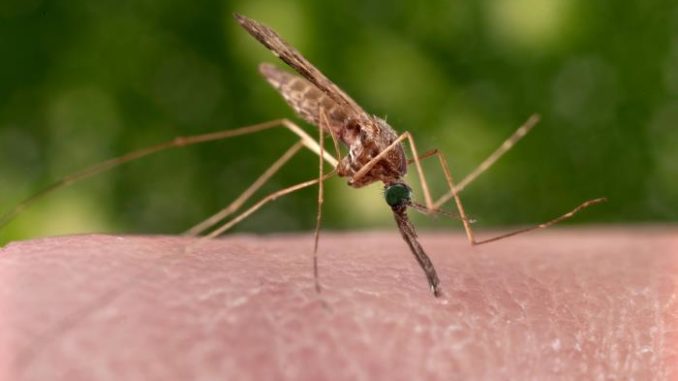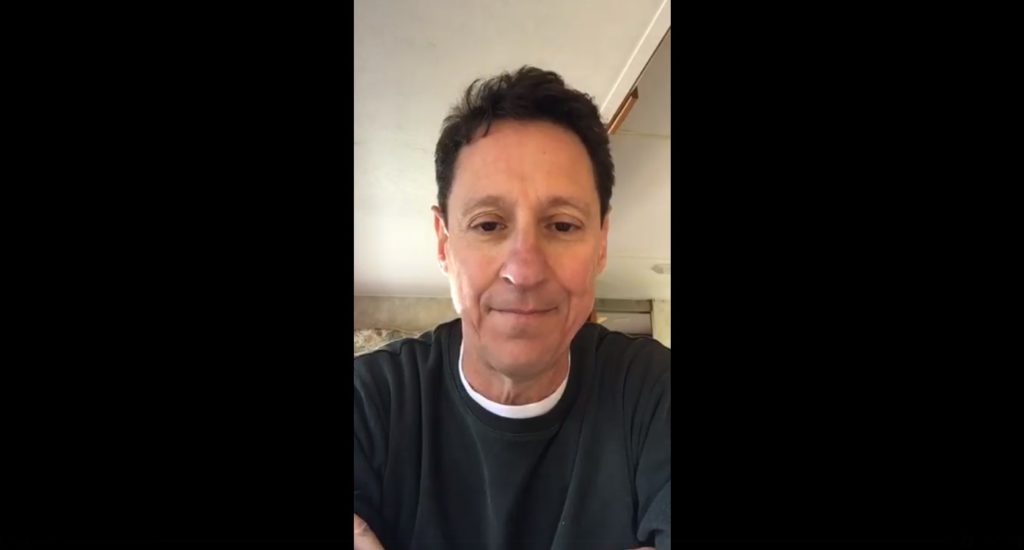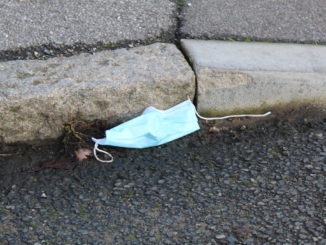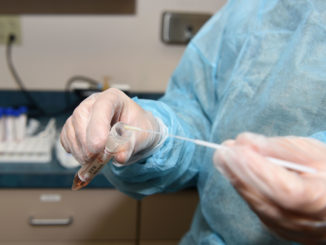
In late March, as coronavirus started to spread in the northern Sacramento Valley, Dr. Steve Zlotowski made a four-minute video that went viral on the internet. An emergency medicine physician at Enloe Medical Center, he shared concerns about the virus based on the experiences of colleagues in hard-hit hospitals and encouraged everyone to take precautionary measures seriously.
Dr. Z, as he’s known in the E.R., still worries about COVID-19. Enloe has not been overwhelmed by patients, but Butte County experienced a particularly virulent summer, with 1,065 new cases in August alone—as of Friday afternoon (Sept. 18), the total was 2,688 including 35 deaths—and faces the prospect of a resurgence amid the seasonal rise of upper respiratory diseases.
Yet there’s more on his radar than coronavirus. Ordinarily at this time of year, Butte County Public Health and media outlets would hammer home threats such as the summer heat, air quality and West Nile virus; mosquitoes have been plentiful and active, but the pandemic has taken up a lot of bandwidth. Case in point—Public Health responded to the CN&R with an email delineating resources, saying the public health director and new public health officer were unavailable for interviews.
Zlotowski, speaking by phone, echoed issues mentioned by Public Health and added Lyme disease—transmitted by ticks, which like mosquitoes have been prevalent—and back-to-school matters such as vaccinations and the impending flu season.
The flu is at the forefront of focus for Zlotowski with its added “COVID context.” Many people conflate the two viruses: Both coronavirus and influenza spread via the respiratory system, both are contagious, both are potentially fatal. Zlotowski observed that this is the season when doctors offices, clinics and pharmacies start posting signs for flu shots. Though aimed broadly, the push emphasizes “people who fall into categories of higher risk” (i.e., young children, seniors, pregnant women and anyone suffering from chronic cardiopulmonary problems).

“This particular year, the more that we can take the severity of flu out of the equation, the better off for everything else,” he continued. Data from the spring shows that similar symptoms between flu and COVID-19 make differentiating the two difficult, “and unfortunately you can’t just test for one and if it’s positive assume they don’t have the other.
“So I would say: Get your flu shot, get your flu shot, get your flu shot.”
Smoke and vectors
Air quality is an issue every year the North Valley due to the accumulation of vehicle emissions and ag-burn smoke. Recent wildfires intensified have pollution to the extreme.
Referring to the skies outside his window during the North Complex Fire (Sept. 10), Zlotowski said, “This is a reminder to people to try to limit their exposure to this kind of air quality. Even if you’re not lung sensitive, we’ve been at unhealthy levels for a couple weeks. And if you do have any type of health sensitivity to smoke, it’s even more important.”
He pointed to N95 respirators—which filter out 95 percent of particles .3 microns or larger—as the protection from smoke.
“Of course, people are wearing a lot of other masks right now,” Zlotowski added, but surgical masks and fabric “really don’t help you when it comes to the smoke [particles].”
Both Public Health and the Butte County Air Quality Management District provide links to air quality index mapping. This morning (Monday, Sept. 21), air quality index readings for Butte County measured from “unhealthy” in Chico to “hazardous” for the eastern part of the county near the North Complex Fire.
Temperatures have fallen from 110-degree plateaus, but hot weather is forecast to extend into fall and still rates among the top concerns for Public Health—not only for hyperthermia and dehydration, but because heat influences the activity of mosquitoes, which carry diseases such as West Nile virus.
Public Health announced the county’s first West Nile virus case July 30. At the time, only four cases had been reported in California; as of Friday afternoon, that total was 58, with four in Butte County.
“We have not seen significant increases this year,” Lisa Almaguer, public information officer for county Public Health, wrote—adding that the county has “almost half as many human cases this year compared to 2019.”
Nonetheless, Zlotowski encourages residents to guard against mosquitoes and ticks, as they’re both vectors for serious diseases. West Nile can prove fatal; Lyme, hard to diagnose, can lead to life-long debilitation. He recommends staying indoors at dusk and dawn, when mosquitoes are most active; wearing long pants while gardening and hiking; checking for ticks after walking through overgrowth, and using repellents “as appropriate.”
Stay vigilant, take care
Early warnings about coronavirus produced an unintended side effect. As hospitals prepared for a potential surge and officials sought to flatten the curve, people who otherwise might have sought care stayed away from the emergency room (see the CN&R report “Anatomy of a surge forestalled”).
Zlotowski said Enloe’s E.R. had half its normal traffic during the first few months of the pandemic, mirroring hospitals across the country. He said the staff knew local folks must have been experiencing “steady state” issues such as heart attacks and abdominal pain—they just weren’t coming for treatment.
“People were scared to come to emergency departments is what happened,” Zlotowski said. “We don’t want to get to that point again. We want to always be communicating to the public that yes, COVID is a concern, but we’re taking all the precautions we can in how we triage and treat; if you have these other conditions that seem severe, you do need to seek appropriate medical attention.”
On the coronavirus front, Zlotowski’s “perspective now is that we have to be realistic about the fact that the fall and winter could be really tough. This country has never seen a real drop-off like other countries have had—there have been other trajectories [elsewhere], but we are fairly seemingly alone in the fact that we have just never gotten this under control.”
People are staying indoors more but getting more social, he continued, “and chances of contracting COVID indoors are proven to be a lot higher than outside. Add that to just the normal cold and flu season, and the strain that that puts on the health-care system.
“I don’t have a perfect crystal ball, but I think if you’re in my business as an emergency medicine physician and you are saying, ‘I’m tired of this, I just want to let down my guard, the fall and the winter are going to be better,’ I think that would be a hazardous conclusion to make in terms of your preparedness.”




Be the first to comment